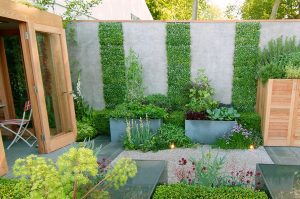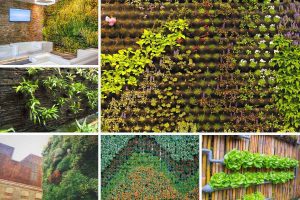Vertical gardening is an innovative and space-saving approach to cultivation that utilizes vertical surfaces for growing plants. This method transcends the limitations of traditional, ground-level gardening, making it ideal for patios, balconies, small backyards, and even indoor spaces. Whether you’re a seasoned gardener with limited square footage or a budding urban dweller seeking a touch of greenery, vertical gardening offers a plethora of benefits and creative possibilities.
Reaping the Rewards: Advantages of Vertical Gardening
Beyond the obvious advantage of maximizing space, vertical gardening boasts a range of benefits for both you and your plants:
Increased Yield:
By utilizing vertical space, you can significantly increase the number of plants you can grow in a confined area. This translates to a potentially bountiful harvest, especially for vegetables, herbs, and certain fruits.
Improved Plant Health:
Vertical gardening often elevates plants, promoting better air circulation and sunlight exposure. This can lead to healthier growth, a reduced risk of fungal diseases, and easier pest detection.
Ergonomic Benefits:
No more back-breaking labour! Vertical gardens allow for easier tending and harvesting, as most plants are positioned at waist or eye level.
Aesthetic Appeal:
Vertical gardens add a vibrant and captivating element to any space. The lush greenery can transform a bare wall into a living artwork, enhancing the visual appeal of your surroundings.
Environmental Advantages:
Vertical gardens act as natural air filters, absorbing pollutants and releasing oxygen. They can also help regulate building temperatures and reduce the urban heat island effect.

Exploring the Options: Types of Vertical Gardens
The adaptability of vertical planting is what makes it so beautiful. To get you going, try these well-liked techniques:
Trellises and Climbing Plants:
Trellises, which can be freestanding or wall-mounted, offer excellent support for climbing plants like beans, peas, cucumbers, and clematis.
Hanging Baskets and Planters:
Suspended baskets and planters are ideal for cascading vines, flowering plants, and herbs. They add a touch of whimsy and are perfect for balconies and patios.
Pocket Planters:
Fabric or felt pocket planters, which can be attached to walls, provide a convenient way to grow herbs, leafy greens, and small flowering plants.
Vertical Stacking Systems:
Freestanding or wall-mounted vertical stackers offer multiple tiers of shelves or containers, creating a compact and efficient vertical garden.
Green Walls:
These intricate systems, often used in commercial settings, involve pre-planted panels or modules that create a living wall.

Cultivating Success: Tips for Thriving Vertical Gardens
With a little planning and knowledge, your vertical garden can flourish:
Selecting the Right Plants:
Choose plants that are suited to your climate and the amount of sunlight the vertical structure receives. Vining plants and cascading varieties are excellent choices.
Potting Mix and Drainage:
Use a well-draining potting mix to prevent waterlogging. Consider incorporating slow-release fertilizer for sustained growth.
Watering Wisely:
Watering needs will vary depending on the plants chosen and the climate. Check the moisture content of the soil on a regular basis and modify the frequency of watering.
Supporting Structures:
Ensure your chosen vertical structure is sturdy enough to support the weight of mature plants and their containers.
Regular Maintenance:
Regularly deadhead flowers, prune overgrown plants, and check for pests and diseases to maintain the overall health and beauty of your vertical garden.
Vertical gardening is a rewarding and sustainable practice that allows anyone, regardless of space limitations, to cultivate a piece of nature. So, embrace your inner vertical gardener, unleash your creativity, and watch your green haven flourish!

